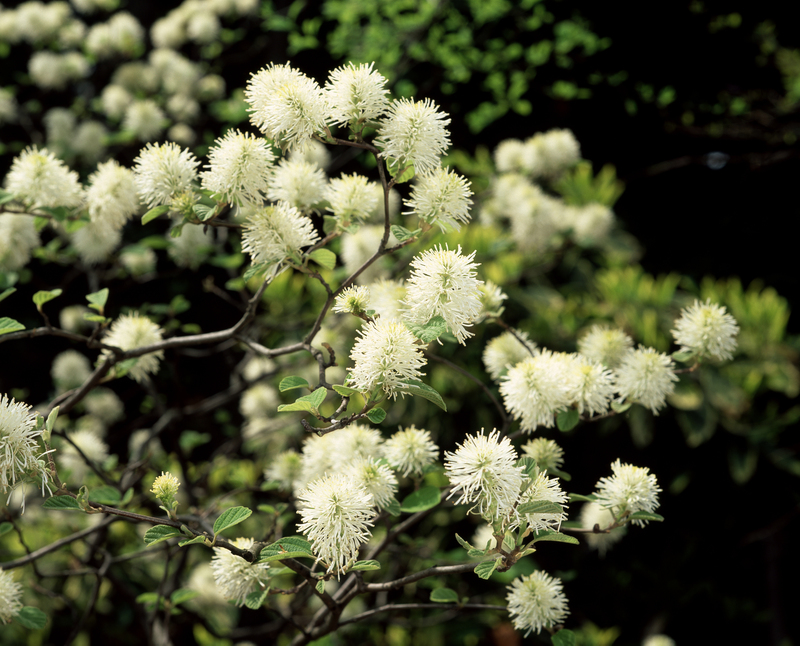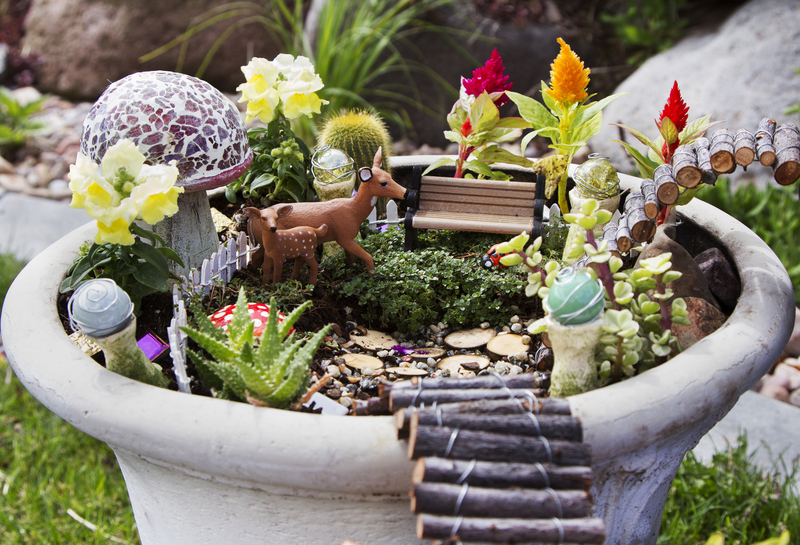A Green Thumb's Guide to Successful Herb Gardening
Posted on 22/08/2025
A Green Thumb's Guide to Successful Herb Gardening
Are you among the countless gardeners aspiring to cultivate lush, fragrant herbs in your own backyard or kitchen? Whether you're an aspiring culinary expert, holistic healer, or just love the scent of fresh basil, diving into herb gardening can be an incredibly rewarding endeavor. This comprehensive, SEO-optimized guide will walk you through every aspect of starting, nurturing, and expanding your herb gardening experience for bountiful, aromatic results.
Why Grow Herbs? The Many Benefits of Herb Gardening
- Cost-Effective: Fresh herbs add zest to meals and reduce grocery bills.
- Health and Wellness: Many herbs offer medicinal properties and natural flavors, boosting both meals and overall well-being.
- Sustainability: Growing herbs helps reduce plastic packaging and your carbon footprint.
- Beauty and Aromatics: Herb gardens are beautiful, release inviting scents, and attract pollinators like bees and butterflies.
From basil and mint to rosemary and thyme, growing herbs brings nature's abundance right to your fingertips. Let's discover how you can transform your gardening journey with a thriving herb garden.

Planning Your Herb Garden: Getting Started
1. Choose Your Herb Garden Location
The success of your herb gardening project starts with picking the right spot:
- Sunlight: Most culinary herbs require at least 6-8 hours of direct sun daily. South or west-facing locations are ideal.
- Soil Drainage: Herbs dislike waterlogged roots. Ensure your location offers good drainage.
- Convenience: Choose a place near your kitchen or walkway for easy harvesting and care.
2. Selecting the Right Herbs for Beginner Gardeners
If you're new to growing herbs, opt for forgiving, easy-to-grow varieties. Here are some popular choices:
- Basil: Perfect for summer, great in Italian dishes, and loves warm conditions.
- Parsley: Biennial, likes partial shade and is perfect as a garnish or salad addition.
- Mint: Vigorous and can become invasive--use containers.
- Thyme: Hardy, drought-tolerant, and excellent for seasoning meats or vegetables.
- Rosemary: Prefers full sun and dry conditions; imparts fragrance to gardens and flavor to food.
- Chives: Mild onion flavor and attractive purple flowers.
Pro Tip: Pick herbs based on your cooking style and climate. There's a vast difference between Mediterranean mainstays (like oregano or sage) and tropical favorites (like lemongrass), so check their requirements!
Herb Gardening in Different Environments
Outdoor Herb Gardens
If you have backyard space, you can create beautiful herb beds, raised gardens, or even border plantings. The main benefit of outdoor herb gardening is the space to grow a greater variety and larger harvests.
- Prepare the Soil: Mix in compost and remove weeds. Herbs prefer moderately rich, well-drained soil.
- Group Herbs by Water Needs: Mediterranean herbs like rosemary and thyme require less frequent watering than basil or parsley.
- Mulch: Use a thin mulch layer to retain moisture and minimize weeds.
Herbs in Containers and Pots
Lack a yard? Container herb gardening is highly versatile and accessible:
- Pot Size: 6-8 inches deep for small herbs; up to 12 inches for larger ones like rosemary.
- Container Material: Clay, ceramic, or food-safe plastics work well. Ensure pots have drainage holes.
- Soil Choice: Use high-quality potting mix with added perlite for aeration.
- Watering: Container plants dry out faster--check frequently.
Indoor Window Herb Gardens
You can grow an indoor herb garden on a windowsill or under grow lights--even in a small apartment.
- Light: South-facing windows are best; supplement with LED grow lights if needed.
- Air Circulation: Crack a window or use a small fan to minimize fungal issues.
- Harvest Regularly: This encourages bushier growth and more production.
Best Practices for Planting Herbs
Seeds vs. Seedlings: Which to Choose?
Many beginners wonder if they should start with herb seeds or buy young plants. Here's a quick guide:
- Seeds: Economical, wide selection. Great for annuals like basil, dill, cilantro.
- Transplants/Seedlings: Head start on the season, ideal for slow-growers like rosemary or sage.
Tip: To germinate seeds, keep soil consistently moist but not soggy. Most herb seeds sprout in 5-21 days.
Step-by-Step Planting Instructions
- Prep the Soil: Loosen it to a depth of 8-12 inches. Add compost and aerate well.
- Plant: Sow seeds or set seedlings to the depth recommended on the packet/label. Water in gently.
- Label: Use weatherproof markers so you know which herbs are which.
Spacing and Companion Planting
- Give Room: Herbs like basil and parsley need 6-12 inches apart; bigger herbs need more space.
- Mix Smartly: Marjoram, thyme, and oregano do well together; avoid putting thirsty and drought-tolerant herbs in the same container.
Herb Garden Maintenance Tips for Optimal Growth
1. Watering Needs
- Consistency: Most herbs prefer evenly moist but not soggy soil.
- Morning Watering: Lower risk of disease; less water loss to evaporation.
- Avoid Overhead: Water directly at the base for best results.
2. Fertilizing Guidelines
- Less is More: Herbs grown for leaf flavor should never be overfertilized. Compost or diluted liquid fertilizer monthly is usually enough.
- Organic Options: Fish emulsion, worm castings, or seaweed extracts keep soil healthy.
3. Pest and Disease Control
Herb plants are mostly resilient, but watch for aphids, spider mites, or powdery mildew. To keep your herb garden healthy:
- Encourage Beneficial Insects: Ladybugs and lacewings feed on pests.
- Practice Good Sanitation: Remove dead leaves and avoid watering late in the day.
- Try Neem Oil or Insecticidal Soap: Gentle and organic solutions for minor infestations.
4. Pruning and Harvesting Herbs
Pruning is crucial for bushy, productive herb garden plants. Keep these tips in mind:
- Harvest Young: Leaves are most flavorful before flowering.
- Pinch Frequently: Snip stems just above a pair of leaves to stimulate new growth.
- Never Strip Bare: Leave at least half of the plant so it continues to thrive.
Expanding Your Herb Garden Knowledge
Creative Herb Garden Design Ideas
- Vertical Herb Gardens: Utilize wall space with hanging pockets or stacked planters.
- Herb Spiral Beds: Create a beautiful, functional spiral mound that offers microclimates for different herbs.
- Edible Borders: Use herbs as low borders for vegetable or flower beds.
- Window Box Herb Gardens: Grow culinary herbs where you can see--and pick--them daily.
Preserving and Storing Your Herb Harvest
A bountiful herb garden often means more than you can use fresh! Try:
- Drying: Hang bunches upside-down in a dry, shaded area. Store in airtight jars away from sunlight.
- Freezing: Chop herbs and freeze in ice cube trays with water or olive oil for instant flavor later.
- Infused Oils and Vinegars: Combine fresh herbs with oils or vinegars for culinary and medicinal uses.
Companion Planting with Herbs
Did you know many herbs are natural pest repellents and can benefit neighboring plants? For example:
- Plant basil near tomatoes to enhance growth and ward off hornworms.
- Marigold and chive borders deter aphids and beetles.
- Mint improves cabbage's flavor and protects from cabbage moths (always contain mint roots!).
Troubleshooting Common Herb Garden Problems
- Yellowing Leaves: Indicates overwatering or poor drainage. Adjust your watering routine and amend the soil.
- Leggy Growth: Herbs need more sun. Move pots or thin out surrounding plants.
- Pest Infestation: Use natural deterrents and inspect plants regularly.
- Poor Flavor: Overfertilizing can make herbs less aromatic. Ease up on fertilizer.

Frequently Asked Questions about Herb Gardening
Can I grow herbs year-round?
Yes! Many herbs such as parsley, chives, and mint can be grown indoors over winter. Use grow lights and maintain moderate indoor temperatures for the best success.
How often should I water my herb garden?
It depends on your environment. Outdoor herbs generally need watering once or twice a week, while containers may need water as often as every other day. Always check the soil first.
Which herbs are best for shady gardens?
Mint, parsley, chervil, and cilantro tolerate more shade than others, though all herbs will appreciate at least 3-4 hours of sun a day.
Conclusion: Cultivate Flavor and Beauty with Herb Gardening
Developing a thriving herb garden--whether outdoors, on a windowsill, or in containers--is a satisfying way to enhance your meals, support pollinators, and create a personal sanctuary of scent and greenery. By following these herb gardening tips on choosing the right location, selecting suitable varieties, using sustainable gardening methods, and troubleshooting common issues, even a beginner can enjoy a lush supply of flavorful, fragrant herbs all season long.
So grab your gloves, pick your seeds, and embark on your own green thumb herb gardening journey today. The rewards will fill both your kitchen and your soul!

